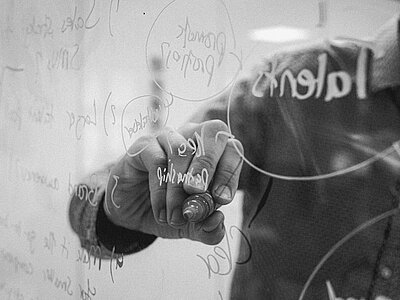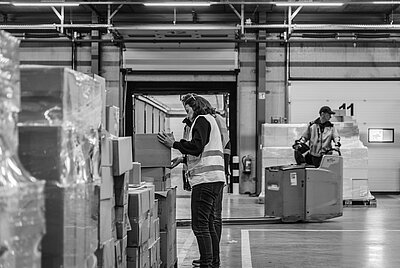Don’t treat digital and physical as competition
Previously, many retailers would have looked at their sales and statistics in isolation. If your physical store sales were declining, but your online sales were soaring then you might have considered one a success and the other a failure.
But phygital demands that we treat them as one, and look to strike the best balance, not a perfect balance. Like the ultimate power-couple, they’re better together.
“Studies show that consumers frequently combine brick-and-mortar shopping with digital shopping in two ways: reading product reviews online, then making well-informed purchases in a store, or touching and seeing products in a store first then ordering online,” says Nick Becker, Peer to Peer Marketing.
This approach is echoed by Mike Hughes, head of Schneider Electric’s digital commerce operations. “It’s a question of identifying what will add most value and ensuring that your organisation’s cultural shift keeps up with technological advancement.”
You’d be wise to explore what your customers are asking for and where you can deliver on those demands in the phygital world.
Phygital experiences
In 2023, it’s important to bring a blend to how people shop. If we are to begin to treat digital and physical as one entity, then it follows that the experience should be the same for the customer.
For many retailers their approach to phygital could be as simple as offering varied delivery and purchase options like click and collect, or turning this on its head, buy in-store with home delivery choices. Even back in 2012, Netherlands-based C&A was trying out social media hangers in its stores in Brazil – showing Facebook likes for items on physical hangers in-store to show trends and in-demand items.
But there are increasingly ambitious ways to embrace the blend of digital and physical to create immersive, and helpful, experiences for customers.
German sports retailer, Puma, has recently expanded Black Station, its metaverse web destination to bring gamification to its customers’ phygital experience outside of the store. Users enter two different online ‘worlds’, that take them on a design journey to two different countries that have inspired the latest footwear designs. Customers are offered the chance to see, and purchase, concept digital footwear, where they can then use ‘credits’ from those online purchases to get discounts against real-life footwear.
After a more store-based experience, British-based beauty retailer Lush created its Lush Lens tool, allowing customer with their #LushLabs app to scan naked products in-store to reveal product ingredients, descriptions, prices and videos. This tool allowed Lush to continue to provide its customers with key product information to drive in-store sales but removed the need for packaging to take on that role. Customers also have a choice of language, meaning they can access product information in any language they need, at any Lush store in the world.
It's important that you use data and consumer insight to shape your phytigal approach whether you decide to meet them in the metaverse, on a social channel, in an app, online or in store.
Showrooming
Showrooms have traditionally been used for large items, with bespoke elements, that people wouldn’t dream of spending money on without seeing, and testing, first. Think sofas or furniture.
But more and more, customers are turning to traditional stores as showrooms. They want to see before they buy, whatever the price tag of their purchase.
“With growing concerns around food safety, ethical sourcing, data security, and environmental impact, consumers want to know more than ever before about the products they buy,” says Baris Kavakli, Managing Director at Portera Technologies.
So, it shouldn’t be a surprise that many stores are turning to showrooming to future-proof their store format.
Vans created a pop-up shop in Milan to coincide with fashion week that provided phytigal experiences and bespoke products. Walls were covered with vibrant artwork, customers could have blank shoes custom painted via an in-store artist and a virtual try on wall allowed people to try different pattern and colour designs that they could share via social media and then order in-store, to be delivered at home.
While the showroom approach doesn’t necessarily boost in-store sales, when viewed as a valuable part of your phytigal approach, it’s the perfect complement to create a blended customer experience that boosts sales across all your platforms.
Viewing your store through a different lens is essential to understanding its role for your customers in 2023 and beyond.
Are you looking to create a future-focussed store experience? Speak to our team on +31 (0) 88 494 20 80 or email us at online@worldpack.eu


